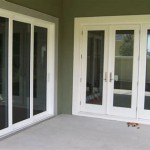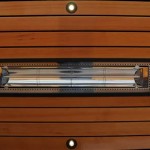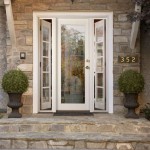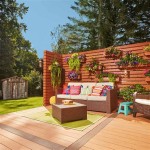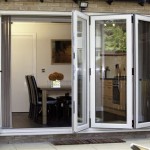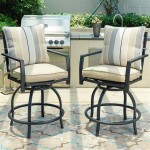Designing a Luxurious Outdoor Patio Stone Fireplace
An outdoor patio fireplace constructed from stone represents a significant enhancement to any residential or commercial property. It functions not only as a striking visual centerpiece but also as a source of warmth and ambiance, extending the usability of outdoor spaces well beyond the warmer months. The design and construction of such a fireplace require careful consideration of various factors, including structural integrity, aesthetic harmony, and adherence to local regulations. This article explores the key aspects involved in designing a luxurious outdoor patio stone fireplace, offering insights into the planning, material selection, and construction processes.
Planning and Preparation: The Foundation of a Successful Project
Before any actual construction begins, a comprehensive planning phase is essential. This phase involves assessing the intended use of the fireplace, selecting an appropriate location, and developing a detailed design that integrates seamlessly with the existing landscape. The success of the project hinges on the thoroughness of this initial preparation.
The first step is to define the purpose of the fireplace. Will it primarily be used for occasional gatherings, or is it intended for more frequent use, such as outdoor cooking or providing a focal point for large events? The intended use will dictate the size of the fireplace, the type of fuel (wood, gas, or propane), and the overall design aesthetic. A larger fireplace with integrated cooking surfaces may be appropriate for frequent use, while a smaller, more decorative fireplace may suffice for occasional gatherings.
Location is another critical factor. The optimal location should consider prevailing wind patterns, proximity to structures, views, and access to utilities if a gas or propane fireplace is planned. It is crucial to position the fireplace away from flammable materials, such as trees, bushes, and overhanging structures. Local building codes and regulations must be consulted to ensure compliance with setback requirements and safety standards. Consider also the visual impact of the fireplace on the surrounding landscape. The goal is to create a cohesive design that complements the existing architecture and natural features of the property.
The design phase involves creating detailed plans that specify the dimensions, materials, and construction methods. This may involve hiring a professional architect or designer to create blueprints that meet local building codes and aesthetic preferences. The plans should include detailed drawings of the fireplace's foundation, firebox, chimney, and any decorative elements. A well-defined design will minimize errors during construction and ensure that the finished product meets expectations.
Finally, acquire all necessary permits before starting any construction. Building permits are typically required for outdoor fireplaces, and failure to obtain them can result in fines or delays. The permitting process may involve submitting detailed plans to the local building department for review and approval. Be prepared to address any concerns or modifications requested by the building department to ensure compliance with all applicable regulations.
Material Selection: Choosing the Right Stone for Durability and Aesthetics
The choice of stone is paramount in determining the durability, appearance, and overall cost of an outdoor fireplace. A wide variety of stone options are available, each with its unique characteristics and aesthetic appeal. Careful consideration should be given to the properties of each stone type to ensure that it is suitable for the specific climate and intended use.
Natural stone, such as granite, limestone, sandstone, and fieldstone, offers a timeless elegance and exceptional durability. Granite is a particularly resilient option, known for its resistance to weathering and its ability to withstand high temperatures. Limestone provides a more classic and refined look, while sandstone offers a warmer, more rustic aesthetic. Fieldstone, with its irregular shapes and varied colors, can create a natural and organic feel. The choice of natural stone will depend on the desired aesthetic and the overall design of the patio.
Manufactured stone, also known as cultured stone, is a more cost-effective alternative to natural stone. It is made from a mixture of concrete, aggregates, and pigments, and it can be molded to replicate the look and feel of various natural stones. Manufactured stone is lighter in weight than natural stone, making it easier to install, and it is available in a wide range of colors and textures. While it may not have the same inherent durability as natural stone, manufactured stone can still provide a long-lasting and aesthetically pleasing finish when properly installed and maintained.
The method of stone cutting and shaping also affects the fireplace's appearance. Roughly cut stones provide a rustic and natural look, while precisely cut stones offer a more formal and refined aesthetic. The choice of stone cut will depend on the desired style and the overall design of the patio. Consider the use of contrasting stones to create visual interest and highlight specific features of the fireplace.
Beyond the stone itself, the mortar used to bind the stones together is also an important consideration. The mortar should be durable, weather-resistant, and compatible with the chosen stone. There are different types of mortar available, each with its own specific properties and applications. Consult with a qualified mason to determine the appropriate type of mortar for the specific project.
Construction Techniques: Ensuring Structural Integrity and Safety
The construction of an outdoor stone fireplace requires a skilled mason with experience in working with stone. Proper construction techniques are essential to ensure the structural integrity and safety of the fireplace. A poorly constructed fireplace can pose a significant safety hazard and may require costly repairs in the future.
The foundation is the most critical element of the fireplace structure. It must be strong enough to support the weight of the stone and withstand the forces of nature. The foundation should be constructed from reinforced concrete and should extend below the frost line to prevent shifting and cracking due to freezing and thawing cycles. The size and depth of the foundation will depend on the size and weight of the fireplace, as well as the soil conditions.
The firebox is the heart of the fireplace, and it must be constructed from fire-resistant materials that can withstand high temperatures. Firebrick is the most common material used for fireboxes, as it is specifically designed to withstand extreme heat. The firebox should be properly insulated to prevent heat from transferring to the surrounding stone and potentially causing damage.
The chimney is responsible for drawing smoke and gases away from the firebox and venting them into the atmosphere. The chimney must be properly sized and constructed to ensure adequate draft and prevent backdrafting. Local building codes typically specify the minimum height and diameter of the chimney, as well as the required materials and construction methods. A chimney liner is often used to protect the chimney from corrosive gases and prevent creosote buildup.
Throughout the construction process, it is essential to ensure that the stones are properly aligned and secured in place. The mason should use a level and plumb bob to ensure that the fireplace is straight and level. The mortar joints should be consistent in width and depth, and the mortar should be properly tooled to create a clean and professional finish. Regularly inspect the construction to identify and correct any potential problems before they become major issues.
Finally, after the fireplace is completed, it should be thoroughly inspected by a qualified professional to ensure that it meets all applicable safety standards and building codes. This inspection should include a check of the foundation, firebox, chimney, and other critical components. Any deficiencies should be corrected before the fireplace is put into use.
Designing and constructing a luxurious outdoor patio stone fireplace is a complex undertaking that requires careful planning, meticulous attention to detail, and the expertise of skilled professionals. By carefully considering the factors outlined in this article, property owners can create a stunning outdoor feature that enhances their property's value and provides years of enjoyment.

Outdoor Fireplace Design Secrets From An Expert

30 Outdoor Fireplace Ideas Cozy Fireplaces

Pool Guest House Outdoor Fireplace Stone Patio Modern Rustic Luxury Design Buechel

30 Outdoor Fireplace Ideas Cozy Fireplaces

Pool Guest House Outdoor Fireplace Stone Patio Modern Rustic Luxury Design Buechel

Outdoor Fireplace Design Ideas

53 Most Amazing Outdoor Fireplace Designs Ever Hintergarten Raum Im Freien Leben Unter Freiem Himmel

Interior Design Ideas Home Bunch An Luxury Homes Blog Outdoor Fireplace Stone Fireplaces Designs

Patio Design Tips

61 Fire Pit Landscaping Ideas Our Designers Love Yardzen
Related Posts

